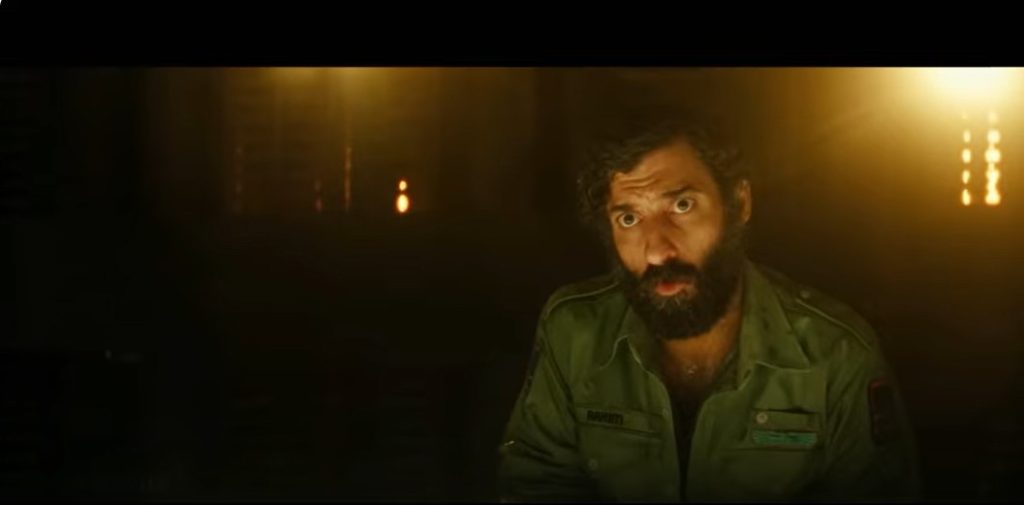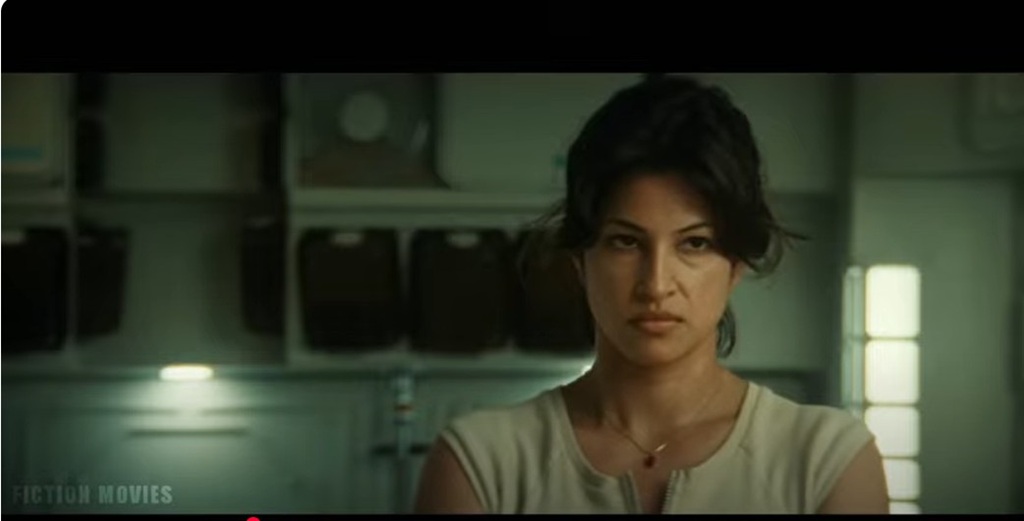Alien: Earth just changed the game. Episode five hits hard. The show pulls fans into a bold flashback. The setting feels like 1979, but the message feels like now. The ship looks like the Nostromo. The tension feels just as sharp. This isn’t lazy fan service. It’s something deeper.
The story honors the original Alien without falling into the same path. It respects the roots but takes a new direction. The episode delivers more than creatures. It gives high-stakes drama, corporate betrayal, and cold ambition. Everything moves fast. Nothing feels safe.
This chapter doesn’t just scare. It says something. It points to real power. It shows what happens when the wrong people take control. The twist feels close to home. That’s why it works. The fear feels real. The danger doesn’t hide in space. It now lives among us.
Why Episode 5 Hits Hard
Episode five of Alien: Earth lands with force. The title, “In Space, No One…”, sets the stage. It echoes the original tagline. That alone stirs up memories. But this story goes further.

Fans don’t just get a flashback. They get a full sci-fi thriller packed into one hour. The episode rewinds the story. It shows how the nightmare begins. Every frame pulls viewers deeper.
The ship, USCSS Maginot, steals the spotlight. The ship matches the Nostromo from Alien (1979. That detail is no accident. The design copies the original blueprints. Every hallway and chamber matches the classic layout. The ship doesn’t shine. It sweats. It rusts. It hums like old metal. That realism hits the nerves.
The set screams authenticity. Chains hang. Pipes drip. Lights flicker. Every corner tells you, “You’re back in the Alien universe.” That choice builds instant trust with longtime fans.
Noah Hawley makes sure nothing feels off. He writes and directs the episode himself. He treats it like a movie inside the series. The style, pacing, and mood match the legacy. He doesn’t just borrow from the past. He rebuilds it.
His mission is simple. He wants fans to believe it. And they will. This episode doesn’t say it’s Alien. It shows it.
Old Fear, New Monsters
A xenomorph appears. But not right away. Hawley holds it back. He lets other threats crawl in first. The “eye midge” shows up early. It rolls, watches, and lurks. Its movement alone triggers unease. Then come the “ticks.” They don’t just bite. They lay eggs in drinking water. That detail sticks. It hits where we feel safe.
Each new creature adds tension. Viewers don’t know what they’ll see next. The design feels raw. The actions feel sickening. These aren’t clean, smooth monsters. They look filthy. They act strangely. They bring chaos.
The fear builds layer by layer. The classic alien still matters. It still shocks. But it doesn’t act alone anymore. These new creatures expand the danger. They share the screen. They deepen the threat.
This time, the horror starts sooner. There’s no calm before the storm. The story opens in unrest. Sabotage strikes first. Greed follows. Loyalty cracks. Betrayal runs deep before the alien even moves.
The terror comes from both sides. Monsters attack from the dark. Humans destroy from the inside. That mix makes this episode hit harder. The xenomorph still frightens. But it’s no longer the only nightmare.
Reckless Genius Creates Chaos
Boy Kavalier triggers the crash. He wants control. He treats the creatures like assets. He thinks they will make him live forever. His plan lacks logic. That’s the point.
This isn’t a smart strategy. It’s blind ambition. Kavalier acts on impulse. He doesn’t stop to think. He doesn’t ask what could go wrong. He believes nothing ever will.
Noah Hawley leans into that chaos. He doesn’t try to explain it away. He uses Kavalier to reflect real-world power. Not careful. Not wise. Just loud, rich, and reckless.
Kavalier wants everything. Space. Tech. Biology. Legacy. He reaches in all directions. He stretches himself thin. He bets on too many ideas. That ego drives the episode.
The show doesn’t name names. But the message feels clear. This character mirrors the world’s loudest tech moguls. He moves fast. He breaks rules. He chases big dreams without checking the ground beneath him.
Kavalier isn’t a villain with a master plan. He’s a warning. He shows what happens when power meets pride. The show lets him move the story. His mistake creates the disaster. His confidence fuels the danger. And that choice works. The chaos feels real. The crash feels earned.
Petrovich Wants Out
Petrovich turns on the crew. He wants out. He wants money. That’s it. He signs up for a long mission. Sixty-five years pass. He gives up his life for a job that drains him. That time changes him. The mission crushes whatever loyalty he had left.
He doesn’t see a future on the ship. He sees an exit. Kavalier offers him one. Petrovich takes the deal. He thinks about the payoff. He ignores the risk. He wants to go home rich. He doesn’t care who dies. He doesn’t care what the creatures do next. He bets on greed and hopes no one notices.
That choice echoes the first Alien. The original crew hated the job. They worked for a cold company. They felt trapped. This show brings back that same pressure.
Nothing changed. The people in charge still pay too little. The crew still suffers. Petrovich acts like a man who has already lost everything. His values break under stress.
Money wins. Morals lose. The cost falls on everyone else. That trade-off drives the story forward. It gives the horror a human cause. Not every monster has claws. Some just want a payout.
Who’s Real and Who’s Not?
Teng raises questions fast. He watches another crew member sleep. He acts strangely. He makes people uneasy. Viewers wonder if he’s an android. His behavior feels off. His stare lingers. His silence stretches too long.
But he’s not a machine. He’s human. That makes it worse. The threat doesn’t come from wiring or code. It comes from inside him. He’s just a bad man in a bad place. That choice feels smart. It pushes the tension higher. You can’t trust anyone. Not because they glitch. But because they hide behind masks.
Morrow creates a different kind of doubt. He walks with authority. His arms hold blades. His eyes stay calm. He calls himself “the worst parts of a man.” He’s a cyborg. Not fully human. Not fully synthetic. He carries old wounds and new tech. His body blends machine parts with living tissue.
He doesn’t serve the alien creatures. He doesn’t serve the crew either. He serves his mission. His job is clear. He must bring the creatures back. No matter the cost. He doesn’t flinch. He doesn’t pause. He acts like someone who gave up fear long ago. That makes him more dangerous than any alien.
The episode plays with the idea of trust. It gives no easy answers. You can’t tell who stands on which side. You can’t tell who’s real until it’s too late.
A New Look at Weyland-Yutani
The final scene shifts everything. It shows the Weyland-Yutani building. The name alone brings weight. Longtime fans recognize it fast. This is the company that chased the xenomorph for decades. It never cared who died along the way. But this time, the show pulls back. It doesn’t give one a clear villain. It doesn’t offer a face. It leaves the upper floor empty. The threat feels bigger now.
Noah Hawley makes a bold move. He shifts focus. He adds a competing company. That choice expands the world. It opens space for fresh stories. Weyland-Yutani still looms large. But it no longer acts alone. The system spreads wider. Greed runs deeper.
The original films gave us glimpses. They showed contracts, orders, and lies. But they never built the full machine. This show starts to fill that gap. It doesn’t break the canon. It builds beside it. It shows how different groups chase the same goal. Power. Control. Profit.
The company doesn’t care about life. It cares about results. That truth lives inside every hallway. The Maginot crash proves it. This new look at Weyland-Yutani adds depth. It keeps the mystery. But it shows just enough to raise new questions.
Who funds these missions? Who pulls the strings now? Who decides what happens next? The answers stay just out of reach. That’s what makes them dangerous.
Why This Episode Matters
Episode five does more than tell a story. It shifts the show’s purpose. It proves Alien: Earth can honor the past and still move forward. The Maginot sets the tone. Its design echoes the Nostromo. But the plot refuses to repeat old steps. It builds something new.
The fear still feels real. The creatures still hunt in the dark. But now, the danger spreads. It comes from the company. It comes from the crew. It comes from one man chasing power.
Kavalier isn’t just a plot device. He acts like a mirror. He proves what unchecked ego can destroy. He thinks nothing can stop him. His failure proves otherwise. The show doesn’t lean on jump scares. It leans on tension. Every choice feels risky. Every scene pulls weight. The pacing stays tight. The danger stays close. This episode changes the rhythm. It doesn’t pause. It pushes forward. It resets the stakes.
Hawley’s vision stands clear. He respects the legacy. But he refuses to play it safe. That’s what gives the show life. The audience gets more than nostalgia. They get new questions. They get fresh threats. They see that horror evolves. Episode five marks a turning point. It tells the viewers, “This isn’t just an Alien show.” It’s bigger. It’s bolder. And it’s just getting started.
What Comes Next?
Kavalier’s plan caused the crash. But the fallout is just starting. His mistake unleashed more than monsters. Weyland-Yutani lurks in the background. Rival forces grow stronger. Strange creatures roam the Earth.
Viewers want answers. What is the real goal? Who controls what comes next? How deep does this conspiracy go? The show leaves no clear path. That’s the hook. It dares the audience to keep watching.
Disclaimer: TheStarMagazine sources stories from The HollywoodReporter and Deadline. We work to share accurate details, but we cannot ensure full accuracy or completeness. Readers should confirm information through reliable sources. Contact us anytime for the latest updates.

